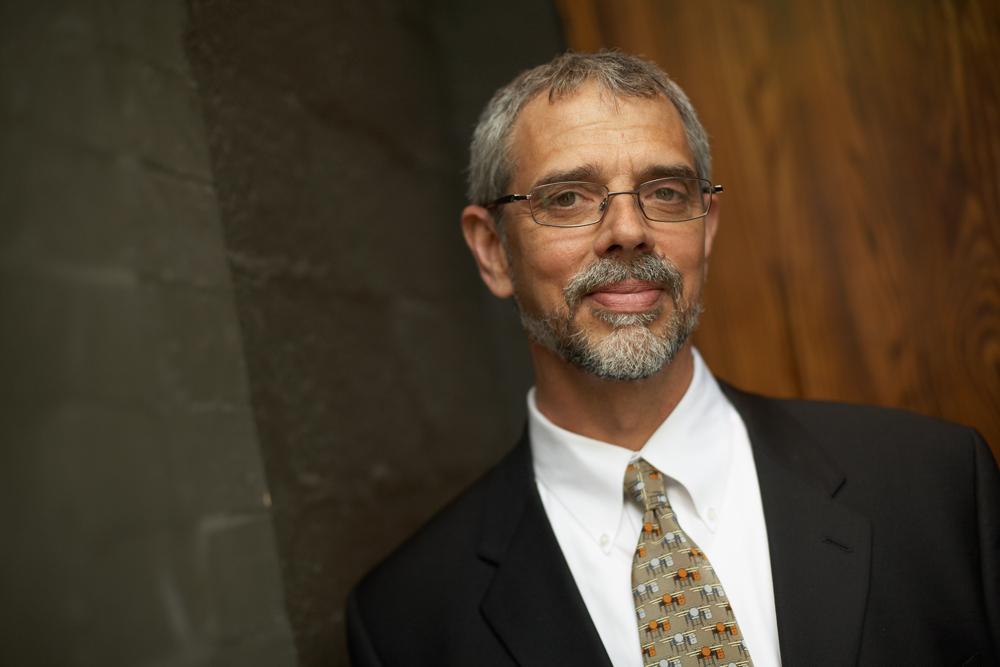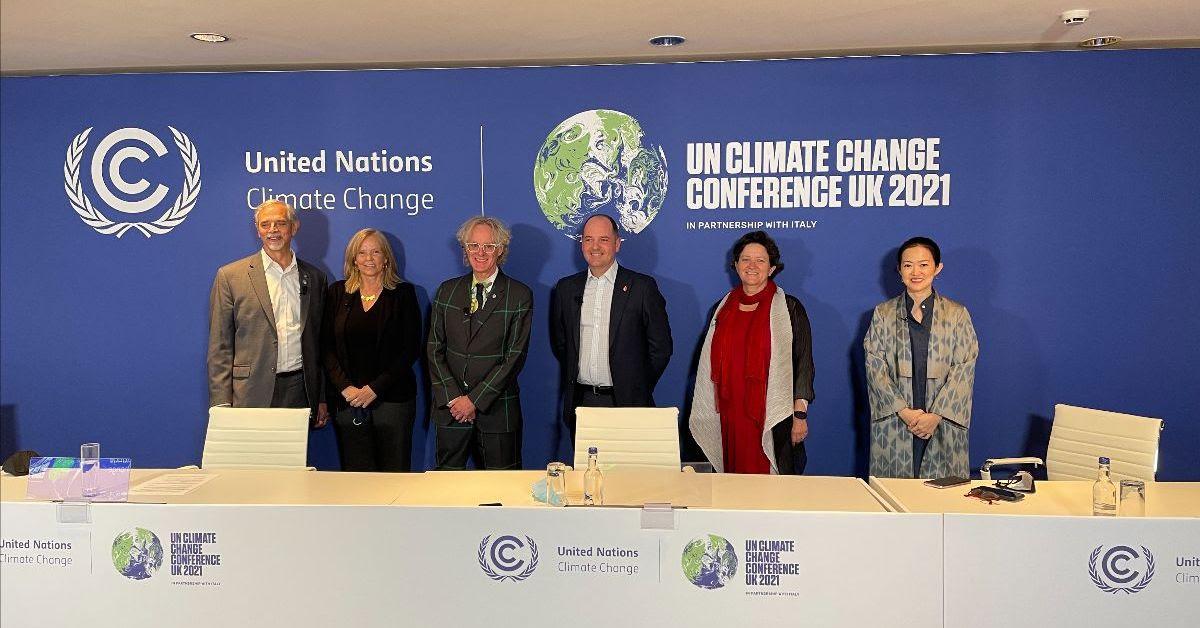The carbon reductions outlined in the Paris Agreement are not sufficient to keep the 1.5˚C maximum global warming target alive. That was the message Carl Elefante, FAIA (B.ARCH ’80) and six other industry changemakers reiterated at COP26, an Olympic-sized climate event that converged 25,000 world and industry leaders in Glasgow, Scotland, last month. Elefante, who attended on behalf of Architecture 2030, AIA and the Climate Heritage Network, moderated a 1.5˚C COP26 Communique Official Side Event leading up to the summit’s “Cities, Regions & Built Environment” day. The panel discussion offered a sobering account of the built environment’s role in our planet’s degradation; that buildings are responsible for nearly 40% of the world’s energy-related carbon emissions and that any chance of slowing planetary warming requires a 65% carbon reduction by 2030 and net-zero by 2040, a recommendation echoed by many world leaders and scientists. Ambitious, but according to the group, attainable, with backing from over 500 firms, organizations and sub-national governments in planning, design, development and construction fields.
For Elefante, it is familiar territory with an evolving map. A principal emeritus at Quinn Evans, where he served as director of sustainability and a pioneer in the sustainable design movement, Elefante—who is now a senior fellow for Architecture 2030 and on the international steering committee for the Climate Heritage Network—has been chasing zero net carbon longer than most, a mission he ardently advocated as the 94th president of the American Institute of Architects.
“In the building sector, we have a clear road forward,” he said. “We can prioritize actions that will have the greatest benefit.”
Now fresh off COP26, he revisits the state of the practice as it relates to our rapidly threatened planet and unpacks what it all means for practitioners. Here are a few of his take-aways:
There is general consensus on how we are going to get there. “Practitioners in the built environment have a clear path forward and the needed technology; our biggest challenges are around affordability and scaling. Frankly, that’s exceptional. It sets us apart. Most other sectors are much farther behind.”
“Carbon accounting” will carry significant weight in financing our built future. “The most interesting presentations I saw at COP26 were from the financial sector. Financiers are no longer interested in investing in buildings with unaddressed climate risk. The climate risk might be vulnerability to sea level rise. Perhaps more importantly, poor emissions performance that prevents the financial sector from meeting its decarbonization targets is also deemed a climate risk. In making financial decisions, carbon accounting will soon have equivalent footing with financial feasibility considerations. In other words, if the feasibility score is good but the carbon score is terrible, banks and investors aren’t going to fund the project. Hearing that had me falling out of my chair.
“The building and financial sectors have agreed to adopt Whole Life Carbon Accounting (WLCA). It’s comprehensive in scope and includes initial embodied emissions from the manufacturing and construction phase, operational emissions, maintenance and repair, and ultimately demolition and deconstruction. For those of us designing buildings, it means our estimates will have legs. Our carbon accounting will be tied directly to the financing of projects. This represents a sea change that aligns design and financial factors with decarbonization.”
We must re-conceive buildings as potential power sources—and mechanisms for carbon capture. “Buildings as a power source—through building-integrated technologies like photovoltaics—will be essential in achieving any green energy strategy. We have the needed technology and know-how to integrate renewables in modest-scale buildings, from single-family homes to mid-rise apartments and office buildings. From this point forward, zero-net energy buildings must be the standard.
“The other decarbonization design imperative is using buildings for carbon capture. Today, many architects are using bio-based products—wood, bamboo, basically anything that grows. But we must also transform standard construction materials. What can we achieve beyond reducing embodied emissions? There is some really interesting work being done with concrete. For instance, demolished concrete rubble can be decalcified. The harvested calcium is then recombined with CO2 taken from the atmosphere to literally grow new stone. The concrete industry today is gigantic. A concrete-centric solution is not to be laughed at.”
A big way to move the needle is right in front of us. “More than 50% of the non-residential building stock is comprised of late-century buildings constructed between 1950-2000. Over the next twenty years, during decarbonization’s primetime, most will need significant reinvestment. This generation of buildings is a problem that won’t go away.
“There are about 6 million buildings in the U.S. that are part of that non-residential building stock, but only 300,000 of them account for 50% of the collective floor area. These large-scale late-century buildings are low hanging fruit, and should be a priority.
“An example may help. In D.C., when a typical 8- to 12-story office building gets to be about 40 years old, the typical renewal approach is to strip off the curtain wall and gut the entire interior. The building is reclad with a new envelope and all interior features and systems are replaced, repositioning the buildings as a class-A office building again—or converting it to housing. Simply by keeping the concrete frame avoids at least 50% of the embodied emissions footprint that would occur had the building been torn down and replaced. Most embodied emissions are in heavy construction. If you do nothing else, just keep the concrete and steel. It may seem counter-intuitive; however, it saves many tons of carbon emissions.”
Every practitioner can (and should) be building net-zero right now. “No excuse; you should be designing zero net energy buildings right now and constructing buildings with carbon sequestering materials, too. Talk to your clients, get them involved.
“Remember, our sector has a clear road forward—we can prioritize what actions have the greatest benefit. Our challenge now is moving from trends to implementing targeted plans in our communities. We need to engage and act.”
Despite the headlines, he’s optimistic. “I’m very optimistic. We’re at the threshold of an exciting new era, an era of unprecedented relevance for the built environment. Our field is being asked to retool everything, everywhere to get to a zero-carbon future. By the end of this century, nearly 9 in 10 people will live in cities. In decarbonizing, we must lay the foundations for the urban future. Solutions that will make the world more peaceful, healthy, equitable and livable will be urban solutions. We are tasked with making the world a better place. What a wonderful job description!”


